Difference between revisions of "Vesparans"
QuietBrowser (talk | contribs) (Trying to expand upon this page so it's more useful.) |
|||
| (10 intermediate revisions by 2 users not shown) | |||
| Line 1: | Line 1: | ||
| − | '' | + | <blockquote> |
| + | ''"I am a Knight of the Hive. A hive knight protects her home, standing shoulder to shoulder with her sisters. We are stronger and quicker than the honey-bees we quarrel with, but our bodies lack the bounty of honey their great chests provide. That is why we fought — because they had so much, and we so little. Now my people have become more aggressive in their acquisition. I am expected to do the same."''<br>—[[Azyrran]], Hive Knight | ||
| + | </blockquote> | ||
| + | __TOC__ | ||
| + | ==Writer Credit== | ||
| + | {|class="wikitable bordered" border="1" cellpadding="2" style="margin-left: auto; margin-right: auto;text-align:left" | ||
| + | |- | ||
| + | !|[[Author-Savin|Savin]] | ||
| + | |- | ||
| + | | | ||
| + | *Vesparans Codex Entry | ||
| + | |} | ||
| + | ==Codex== | ||
| + | <blockquote> | ||
| + | '''Name:''' Vesparan (pl. Vesparans; aka Hornetfolk) | ||
| − | + | '''Sexes:''' Male and Female | |
| − | |||
| + | '''Height:''' Hornet females stand roughly 6 ft. tall; males typically range between 5 ft. and 5.6". | ||
| + | |||
| + | '''Weight:''' Slightly lighter than humans of the same stature. | ||
| + | |||
| + | '''Skin:''' Vesparans have golden-hued, brown, or black skin. | ||
| + | |||
| + | '''Hair:''' Most vesparans have golden or black hair. Typically the opposite color to the individual's skin color. | ||
| + | |||
| + | '''Eyes:''' Solid black. | ||
| + | |||
| + | '''Ears:''' Tapered, elfin ears. Typically smaller than an elf's, perhaps 3" long. | ||
| + | |||
| + | '''Lifespan:''' Drones and workers rarely live more than 30 years; handmaidens and queens can live at least 100 years. | ||
| + | |||
| + | '''Maturity:''' Hornets reach adulthood after about 1 year. Handmaidens and queens take considerably longer, reaching maturity at 10 years of age. | ||
| + | </blockquote> | ||
| + | ===Description=== | ||
| + | ---- | ||
| + | <blockquote> | ||
| + | Vesparans, better known as hornetfolk, are a race of humanoid insects found throughout the westerlands of the continent, spanning from the southern plains to the cold forests of the Marches. They have chitin-armored limbs and thick manes of hair parted by animated insectile feelers. Dark eyes and full, often-painted lips round out their faces. Most hornets have slender, athletic figures, with their most distinguishing trait being their oversized rear abdomens which house a potent stinger and ovipositor. | ||
| + | |||
| + | Female vesparans are taller and more powerfully-built than their male counterparts, as they serve as laborers and soldiers for the hive while the males remain in pampered seclusion within the queen's harem. The iconic image of a female hornet is a tall, toned amazon armored in glistening black chitin and charred bronze, wielding a venom-coated spear against the enemies of her queen. | ||
| + | |||
| + | Typically, females have small breasts and hips, as they aren't part of the reproductive cycle beyond perhaps wetnursing one or two hatchlings. Males have large members and balls to best fulfill their role beneath their queens, with otherwise unremarkable figures. Handmaidens of the queen, sometimes called Hive Knights, are the largest and most well-groomed members of the hive; they often have larger breasts and fuller figures overall to assist their mothers in rearing children when they are not deployed to war. | ||
| + | |||
| + | A hornet queen is the largest of all her hive, often standing well over 7 ft. tall. Compared to beefolk and other insectile beast-kin, a hornet queen rears relatively few young at a time, and devotes little time to mating compared to combat. The amazon queens lead their children to war and pillage from the front lines, entrusting their handmaidens to become their replacements should they fall. Vesparan warrior-queens tend to be physically mighty as well as beautiful, with massive venomous stingers, large honey-filled breasts, and ancestral arms and armor passed down through countless generations. | ||
| + | </blockquote> | ||
===Reproduction=== | ===Reproduction=== | ||
| − | + | ---- | |
| − | + | <blockquote> | |
| − | + | Typically, only one female in a hornet hive is fertile at any one time — the queen. While she remains within the hive, the queen exudes a powerful pheromone that renders all of her daughters quite sterile, and stokes the flames of male hornets' lusts to such an extent that, while in her presence, they cannot help themselves but to be constantly erect and ready for the queen's pleasure. | |
| − | + | Despite the overwhelming virility of hornet males, their queens lay eggs rather rarely, as vesparan hives tend to possess only limited resources compared to their wealthy and prosperous cousins, the beefolk. When a hornet queen is fertilized by one of her drones, she can swell with a clutch of between twenty and thirty eggs, which she will use her ovipositor to load into several of her daughters; these daughters, in turn, will leave the hive and seek out members of other races to defeat in battle and anally fill with eggs, forcing other races to do the most laborious part of egg-care until they're practically ready to hatch. Only a rare and miserable hornet-girl is forced to carry her queen's eggs to term herself, unable to best anyone at all in combat. A chemical produced by an egg's shell causes the unwilling host to begin lactating a thick, sweet honey shortly after implantation. | |
| + | |||
| + | Once laid, a hornet egg typically gestates in its host for ten to twelve days before ejecting itself. Grounded eggs hatch within a matter of minutes, giving rise to small hornets not much larger than a human fist — and yet ravenously hungry. Hornetlings will drink their fill from their host to gain their strength before instinctively flying back to their home hive, where they are raised by their sisters until adulthood. | ||
| + | |||
| + | It is unsurprising that relatively few eggs, once sent into the wild, return to the nest as live young. | ||
| + | </blockquote> | ||
| + | ===History=== | ||
| + | ---- | ||
| + | <blockquote> | ||
| + | Hornets have little history to speak of, as each hive is unto itself a sovereign nation independent of all other hives. The Belharans attempted several times to subjugate the hornets, treating them as a cohesive whole, and failed every time. Some individual queens would bend the knee or sign alliances with outside powers, but the majority are painfully prideful and haughty, refusing to even consider such humiliation. History speaks, on rare occasion, of hornet amazons from dead hives becoming adventurers or even heroes, wielding bronze and poison in the name of some small village or petty kingdom that earned her respect — and often became her new home, soon to be the site of a new hive. | ||
| + | </blockquote> | ||
| + | ===Society & Culture=== | ||
| + | ---- | ||
| + | <blockquote> | ||
| + | Every hive is different, but most vesparans conform to some universal principles. The queen rules all within and around her hive, commanding the unwavering loyalty of her daughters. She mates rarely, just enough to replenish the hive's numbers and, on occasion, to produce a new handmaiden to become her heir. Most of these handmaidens, each individually selected and groomed from childhood, become hive knights — guardians of the hive and bodyguards to their mother, helping to administrate and raise her lesser daughters. Only a handful of these hive knights will exist at once, perhaps 5% of the hive's total strength at most. | ||
| − | + | Hornets are itinerant warriors. Even the least of the hive's laborers is expected to be a master of the war spear and shield, and excepting its males, the entire hive can be mobilized for combat at a moment's notice. Any vesparan who cannot hold her own in battle soon finds herself exiled... or dies attempting to prove her mettle, a death worthy of honor among her sisters. | |
| + | |||
| + | Unlike the peaceful and prosperous beefolk, vesparans do not produce much for themselves, and instead take what they need — often from the bees. In more civilized parts of the world, vesparan hives typically restrict themselves to fighting and raiding against uncivilized foes such as gnolls and wyverns, but where the foothold of civilization grows weaker, the hornets may grow brazen and aggressive against even human settlements. | ||
| + | |||
| + | How daring the hive's raids grow depends largely on the queen's personality, and may change generation to generation. However, no hornet queen in history has been shown to wholly shrug off the temptation of conquest; theirs is not a race of farmers and honey-brewers, but of warriors. The lust for battle exists in the heart of every vesparan, even the males, and it must be allowed to out from time to time, or hives may well descend into internal chaos until the most ruthless and violent of all the former queen's handmaidens seizes control and turns her sisters outwards on their neighbors. | ||
| + | </blockquote> | ||
| − | == | + | ==Codex Acquisition== |
| − | * [[ | + | Only one of the conditions below must be met to unlock the Vesparans Codex entry: |
| + | *Encountering the [[Hornets]] in the [[Old Forest]] | ||
| − | == | + | ==Other Information== |
| − | + | ===Transformatives=== | |
| − | * [[Hornet | + | ---- |
| + | *[[Hornet Sting]] | ||
| − | == | + | ==Characters== |
| − | + | {|class="wikitable bordered" border="1" cellpadding="2" style="margin-left: auto; margin-right: auto; border: none; text-align:center" | |
| + | |- | ||
| + | |[[File:Azyrran_Moira_WikiHeadshot.png|125px|Azyrran]] | ||
| + | |[[File:HornetDrone-DCL-Headshot.png|125px|Hornet Drones]] | ||
| + | |[[File:HornetWorker-DCL-Headshot.png|125px|Hornet Workers]] | ||
| + | |[[File:Jyrranaz_Moira_WikiHeadshot.png|125px|Jyrranaz]] | ||
| + | |[[File:Prince_Nyze_Moira_WikiHeadshot.png|125px|Prince Nyze]] | ||
| + | |[[File:Queen_Nyzerrah_Moira_WikiHeadshot.png|125px|Queen Nyzerrah]] | ||
| + | |- | ||
| + | |[[Azyrran]] ||[[Hornet Drone|Hornet Drones]] ||[[Hornet Worker|Hornet Workers]] &<br>[[Hive Knight|Hive Knights]] ||[[Jyrranaz]] ||[[Prince Nyze]] ||[[Queen Nyzerrah]] | ||
| + | |} | ||
| − | [[Category: Races | + | [[Category:Races]] |
Latest revision as of 06:28, 9 November 2021
"I am a Knight of the Hive. A hive knight protects her home, standing shoulder to shoulder with her sisters. We are stronger and quicker than the honey-bees we quarrel with, but our bodies lack the bounty of honey their great chests provide. That is why we fought — because they had so much, and we so little. Now my people have become more aggressive in their acquisition. I am expected to do the same."
—Azyrran, Hive Knight
Writer Credit
| Savin |
|---|
|
Codex
Name: Vesparan (pl. Vesparans; aka Hornetfolk)
Sexes: Male and Female
Height: Hornet females stand roughly 6 ft. tall; males typically range between 5 ft. and 5.6".
Weight: Slightly lighter than humans of the same stature.
Skin: Vesparans have golden-hued, brown, or black skin.
Hair: Most vesparans have golden or black hair. Typically the opposite color to the individual's skin color.
Eyes: Solid black.
Ears: Tapered, elfin ears. Typically smaller than an elf's, perhaps 3" long.
Lifespan: Drones and workers rarely live more than 30 years; handmaidens and queens can live at least 100 years.
Maturity: Hornets reach adulthood after about 1 year. Handmaidens and queens take considerably longer, reaching maturity at 10 years of age.
Description
Vesparans, better known as hornetfolk, are a race of humanoid insects found throughout the westerlands of the continent, spanning from the southern plains to the cold forests of the Marches. They have chitin-armored limbs and thick manes of hair parted by animated insectile feelers. Dark eyes and full, often-painted lips round out their faces. Most hornets have slender, athletic figures, with their most distinguishing trait being their oversized rear abdomens which house a potent stinger and ovipositor.
Female vesparans are taller and more powerfully-built than their male counterparts, as they serve as laborers and soldiers for the hive while the males remain in pampered seclusion within the queen's harem. The iconic image of a female hornet is a tall, toned amazon armored in glistening black chitin and charred bronze, wielding a venom-coated spear against the enemies of her queen.
Typically, females have small breasts and hips, as they aren't part of the reproductive cycle beyond perhaps wetnursing one or two hatchlings. Males have large members and balls to best fulfill their role beneath their queens, with otherwise unremarkable figures. Handmaidens of the queen, sometimes called Hive Knights, are the largest and most well-groomed members of the hive; they often have larger breasts and fuller figures overall to assist their mothers in rearing children when they are not deployed to war.
A hornet queen is the largest of all her hive, often standing well over 7 ft. tall. Compared to beefolk and other insectile beast-kin, a hornet queen rears relatively few young at a time, and devotes little time to mating compared to combat. The amazon queens lead their children to war and pillage from the front lines, entrusting their handmaidens to become their replacements should they fall. Vesparan warrior-queens tend to be physically mighty as well as beautiful, with massive venomous stingers, large honey-filled breasts, and ancestral arms and armor passed down through countless generations.
Reproduction
Typically, only one female in a hornet hive is fertile at any one time — the queen. While she remains within the hive, the queen exudes a powerful pheromone that renders all of her daughters quite sterile, and stokes the flames of male hornets' lusts to such an extent that, while in her presence, they cannot help themselves but to be constantly erect and ready for the queen's pleasure.
Despite the overwhelming virility of hornet males, their queens lay eggs rather rarely, as vesparan hives tend to possess only limited resources compared to their wealthy and prosperous cousins, the beefolk. When a hornet queen is fertilized by one of her drones, she can swell with a clutch of between twenty and thirty eggs, which she will use her ovipositor to load into several of her daughters; these daughters, in turn, will leave the hive and seek out members of other races to defeat in battle and anally fill with eggs, forcing other races to do the most laborious part of egg-care until they're practically ready to hatch. Only a rare and miserable hornet-girl is forced to carry her queen's eggs to term herself, unable to best anyone at all in combat. A chemical produced by an egg's shell causes the unwilling host to begin lactating a thick, sweet honey shortly after implantation.
Once laid, a hornet egg typically gestates in its host for ten to twelve days before ejecting itself. Grounded eggs hatch within a matter of minutes, giving rise to small hornets not much larger than a human fist — and yet ravenously hungry. Hornetlings will drink their fill from their host to gain their strength before instinctively flying back to their home hive, where they are raised by their sisters until adulthood.
It is unsurprising that relatively few eggs, once sent into the wild, return to the nest as live young.
History
Hornets have little history to speak of, as each hive is unto itself a sovereign nation independent of all other hives. The Belharans attempted several times to subjugate the hornets, treating them as a cohesive whole, and failed every time. Some individual queens would bend the knee or sign alliances with outside powers, but the majority are painfully prideful and haughty, refusing to even consider such humiliation. History speaks, on rare occasion, of hornet amazons from dead hives becoming adventurers or even heroes, wielding bronze and poison in the name of some small village or petty kingdom that earned her respect — and often became her new home, soon to be the site of a new hive.
Society & Culture
Every hive is different, but most vesparans conform to some universal principles. The queen rules all within and around her hive, commanding the unwavering loyalty of her daughters. She mates rarely, just enough to replenish the hive's numbers and, on occasion, to produce a new handmaiden to become her heir. Most of these handmaidens, each individually selected and groomed from childhood, become hive knights — guardians of the hive and bodyguards to their mother, helping to administrate and raise her lesser daughters. Only a handful of these hive knights will exist at once, perhaps 5% of the hive's total strength at most.
Hornets are itinerant warriors. Even the least of the hive's laborers is expected to be a master of the war spear and shield, and excepting its males, the entire hive can be mobilized for combat at a moment's notice. Any vesparan who cannot hold her own in battle soon finds herself exiled... or dies attempting to prove her mettle, a death worthy of honor among her sisters.
Unlike the peaceful and prosperous beefolk, vesparans do not produce much for themselves, and instead take what they need — often from the bees. In more civilized parts of the world, vesparan hives typically restrict themselves to fighting and raiding against uncivilized foes such as gnolls and wyverns, but where the foothold of civilization grows weaker, the hornets may grow brazen and aggressive against even human settlements.
How daring the hive's raids grow depends largely on the queen's personality, and may change generation to generation. However, no hornet queen in history has been shown to wholly shrug off the temptation of conquest; theirs is not a race of farmers and honey-brewers, but of warriors. The lust for battle exists in the heart of every vesparan, even the males, and it must be allowed to out from time to time, or hives may well descend into internal chaos until the most ruthless and violent of all the former queen's handmaidens seizes control and turns her sisters outwards on their neighbors.
Codex Acquisition
Only one of the conditions below must be met to unlock the Vesparans Codex entry:
- Encountering the Hornets in the Old Forest
Other Information
Transformatives
Characters
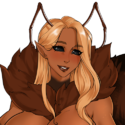
|
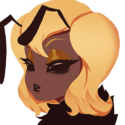
|
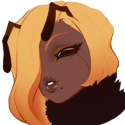
|
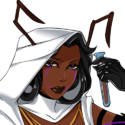
|
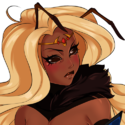
|
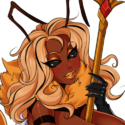
|
| Azyrran | Hornet Drones | Hornet Workers & Hive Knights |
Jyrranaz | Prince Nyze | Queen Nyzerrah |